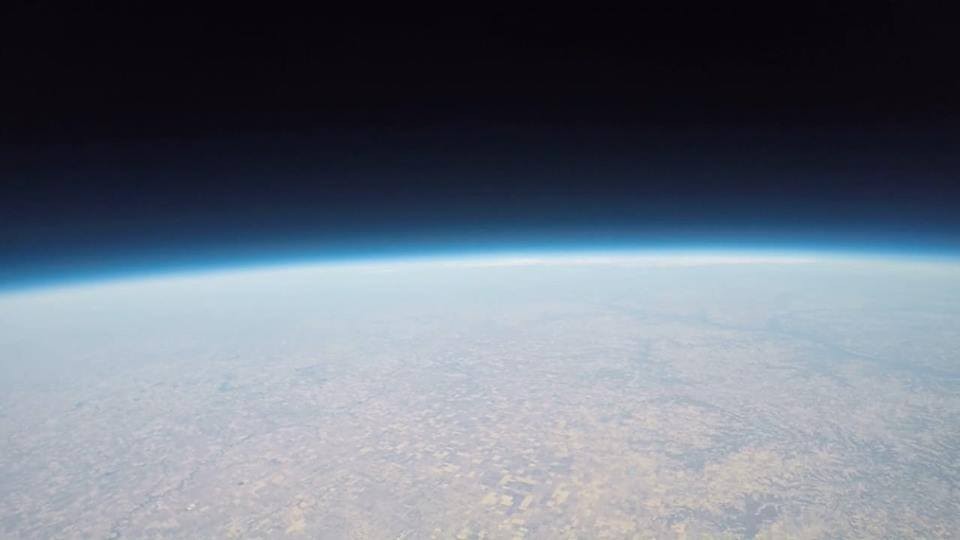Minn. Unit's High-Altitude Balloon Reaches 95,000 Ft.
Capt. Randall S. Knox
Public Affairs Officer
Minnesota Wing

 The sky was the limit when a Southeast Minnesota Composite Squadron team launched a high-altitude balloon that climbed 95,000 feet – some 18 miles – before being recovered 88 miles away after a flight lasting about 4½ hours.
The sky was the limit when a Southeast Minnesota Composite Squadron team launched a high-altitude balloon that climbed 95,000 feet – some 18 miles – before being recovered 88 miles away after a flight lasting about 4½ hours.
The squadron members carried out the project as part of the Global Space Balloon Challenge. They launched the 1,200-gram, commercially available balloon in Hayfield, Minnesota, and recovered it and its payload near Lawler, Iowa.
The team consisted of:Maj. Othelmo Da Silva, squadron commander; 2nd Lt. Eric Pool, project officer; and Cadet Airmen Micah Bergen, Joseph Meyer and Richard Sylak,
An onboard camera captured footage throughout the flight.
“I am really glad I was able to participate in this project,” Meyer said. “I was surprised that the balloon went as high as it did.”
“We purchased a kit, which contained most of the materials. But we had to put it together, wire all the electronics and make sure everything operated,” said Bergen, who had helped built the payload for the September 2018 flight. “It took about a month to assemble and test. We had a lot of fun and learned a lot.”
 “Aerospace education is so much more than just aviation,” da Silva said. “This is a great example of the variety of topics within the aerospace education area. It is really thrilling to think that our balloon reached an altitude higher than even the highest-flying airplane can achieve.
“Aerospace education is so much more than just aviation,” da Silva said. “This is a great example of the variety of topics within the aerospace education area. It is really thrilling to think that our balloon reached an altitude higher than even the highest-flying airplane can achieve.
“This project was a practical application of scientific principles: Design the experiment, collect the data (altitude, temperature, pressure, the images) and share the data with the global community.”
Sylak said the team ran some simulations before the launch and had a general idea of the flight path. Describing how a balloon encounters winds from different directions as it rises through the atmosphere, causing the flight path to shift, he said it first drifted north with lower-level winds and then changed directions and traveled southeast as higher-altitude winds blew that way.
The balloon project was the squadron’s second. Its predecessor took place in September 2018. The payload assembled and flown at that time – a flight computer, a GPS unit, a GoPro camera, an altimeter and a battery pack – was recovered intact and re-used. The components were mounted in a triangular frame suspended below the balloon.
A parachute attached above the payload and a plastic foam ring beneath it were enough to ensure the electronics’ survival after the 95,000-foot descent.



